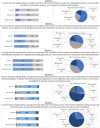Management of paediatric acute severe behavioural disturbance in emergency departments across Australia: A PREDICT survey of senior medical staff
- PMID: 36328402
- PMCID: PMC10946763
- DOI: 10.1111/1742-6723.14105
Management of paediatric acute severe behavioural disturbance in emergency departments across Australia: A PREDICT survey of senior medical staff
Abstract
Objective: Acute severe behavioural disturbance (ASBD) is a condition seen with increasing frequency in EDs. It poses a significant risk to the patient and those around them. Little is known about the epidemiology or most effective management in the paediatric population. The aim of the present study is to clarify the practice of senior emergency doctors in Australia when managing paediatric ASBD.
Methods: The present study was a voluntary electronic questionnaire distributed to and undertaken by senior medical staff in EDs affiliated with the Paediatric Research in Emergency Departments International Collaborative (PREDICT) network. Respondents reported on exposure to and confidence in managing paediatric ASBD and their current practices.
Results: A total of 227 (33%) clinicians completed the survey between February and May 2020. Most clinicians were caring for at least two young people with ASBD each week (72%), felt confident regarding the majority of components of management and referred to local clinical practice guidelines (69%). Agitation/sedation rating scales were seldom used (19%). There was a significant variation in self-reported management practices. The choice of whether to use medication at all, the medication chosen and route of administration all varied greatly. Respondents were more willing to provide parenteral medication to young people reported as having recreational drug intoxication (84%) than those with neurodevelopment disorders (65%) when the same degree of agitation was reported.
Conclusions: Within Australia, there is considerable variation in paediatric ASBD practice, in particular regarding medication provision. Further prospective research is required to inform best clinical practice.
Keywords: child psychiatry; hypnotic and sedative; paediatric emergency medicine; psychomotor agitation.
© 2022 The Authors. Emergency Medicine Australasia published by John Wiley & Sons Australia, Ltd on behalf of Australasian College for Emergency Medicine.
Conflict of interest statement
FEB and SC are section editors for
Figures

 ), Paediatric EDs; (
), Paediatric EDs; ( ), mixed EDs; (
), mixed EDs; ( ), overall.
), overall.

 ), Paediatric EDs; (
), Paediatric EDs; ( ), mixed EDs.
), mixed EDs.
 ), No medication; (
), No medication; ( ), oral; (
), oral; ( ), IM; (
), IM; ( ), IV.
), IV.References
-
- Stevenson R, Derek TK. Acute behavioural disturbance: a physical emergency psychiatrists need to understand. BJPsych Adv. 2021; 27: 333–42.
-
- Oliver M, Adonopulos AA, Haber PS et al. Impact of acutely behavioural disturbed patients in the emergency department: a prospective observational study. Emerg. Med. Australas. 2019; 31: 387–92. - PubMed
-
- Calver L, Drinkwater V, Gupta R, Page CB, Isbister GK. Droperidol v. haloperidol for sedation of aggressive behaviour in acute mental health: randomised controlled trial. Br. J. Psychiatry 2015; 206: 223–8. - PubMed
-
- Calver L, Page CB, Downes MA et al. The safety and effectiveness of droperidol for sedation of acute behavioural disturbance in the emergency department. Ann. Emerg. Med. 2015; 66: 230–8. - PubMed
-
- Chan EW, Taylor DM, Knott JC, Phillips GA, Castle DJ, Kong DC. Intravenous droperidol or olanzapine as an adjunct to midazolam for the acutely agitated patient: a multicentre, randomized, double‐blind, placebo‐controlled clinical trial. Ann. Emerg. Med. 2013; 61: 72–81. - PubMed
MeSH terms
Grants and funding
LinkOut - more resources
Full Text Sources

